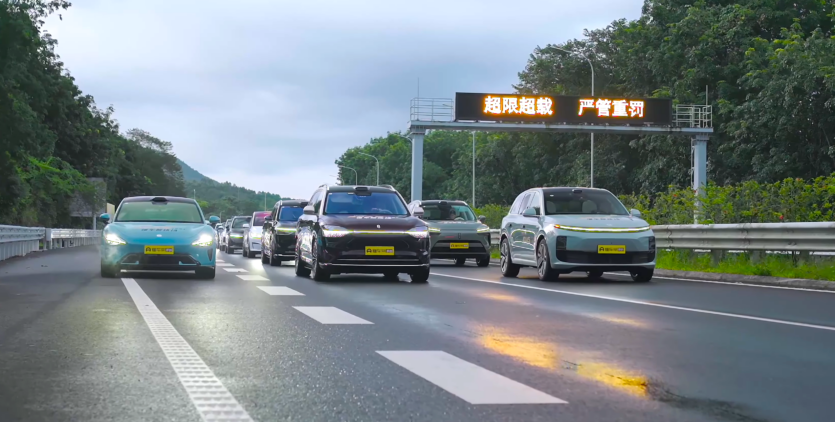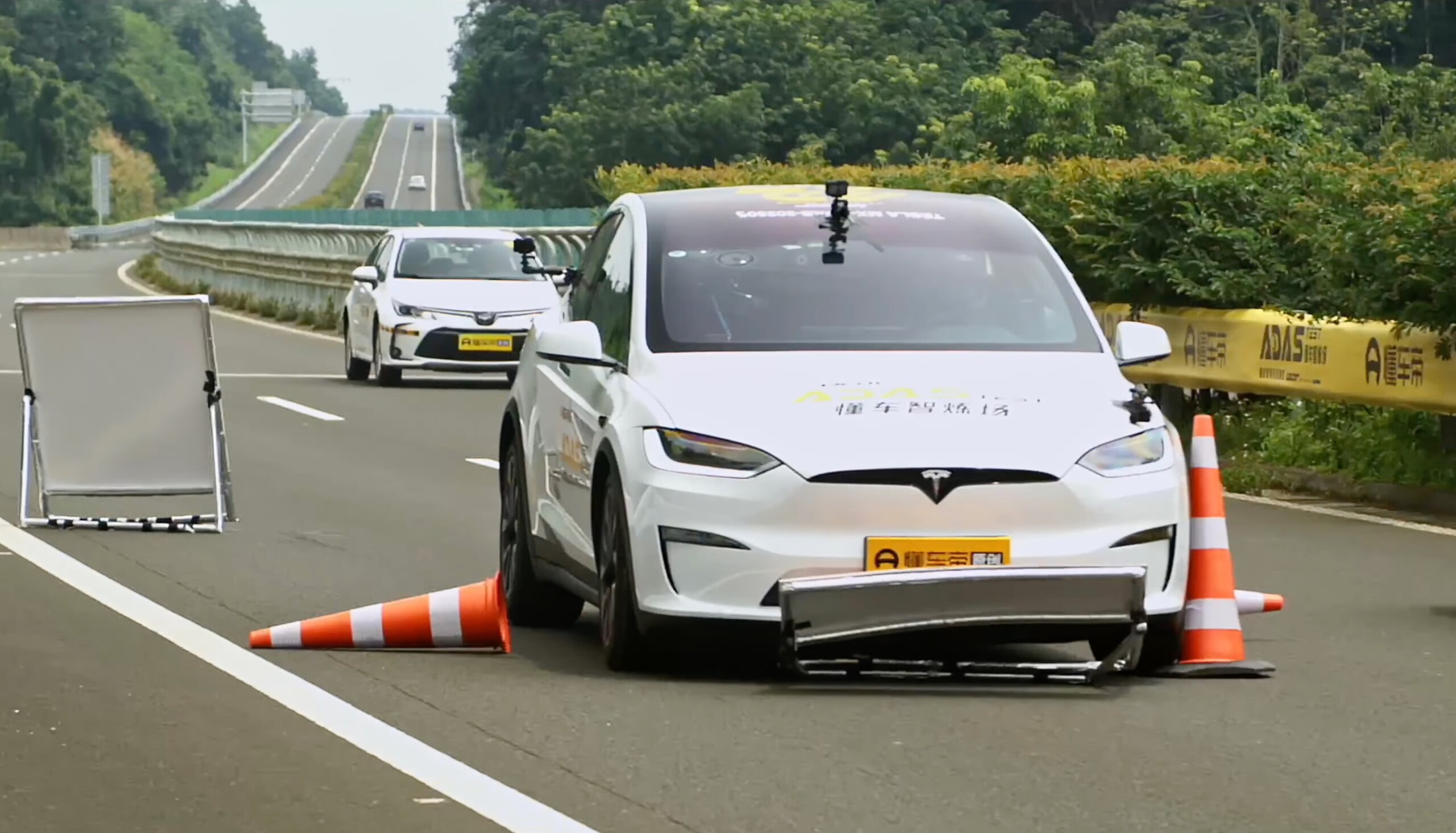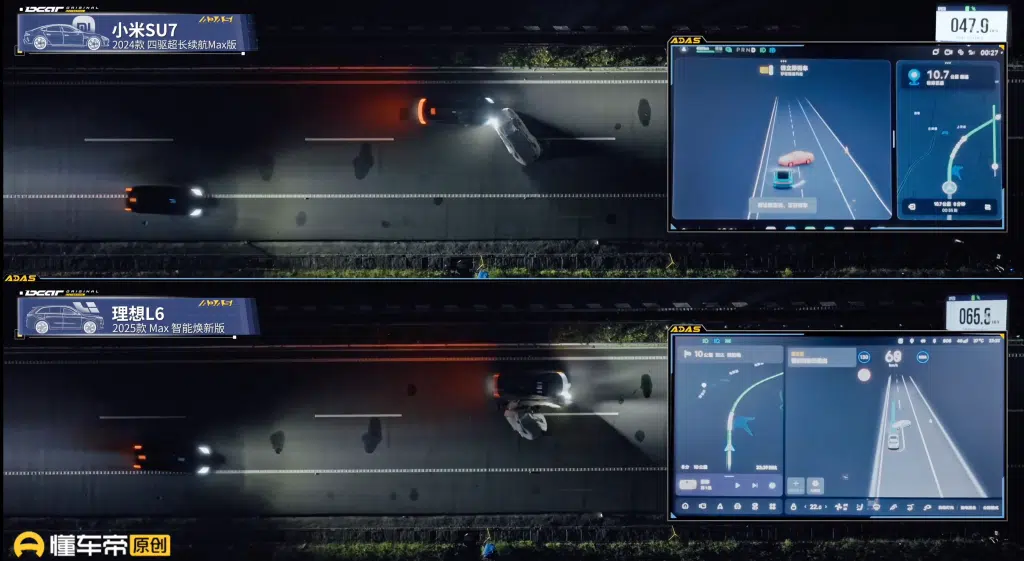
Automakers promise that their ADAS systems will provide safer driving and sometimes even partial or full autonomy. But what about testing these claims in real road conditions? A Chinese video test showed that most of them failed.
The Chinese publication Dongchedi organized a large-scale experiment. It blocked a real highway and conducted a series of tests for 36 cars with driver assistance systems — from Tesla to BYD. The conditions were close to the complex and dangerous road situations that drivers face every day. As a result, there were — 216 accidents, sometimes with damage, and only a few cars showed a decent level. Tesla proved to be the most resilient.
What was checked and how
Unlike laboratory crash tests, the focus here was not on body strength, but on the behavior of electronic assistance and self-driving systems. Automatic Electronic Braking System (AEB), Adaptive Cruise Control, Lane Keeping Control and other elements of the complex ADAS had to prove their ability to prevent accidents in difficult conditions.

All tests took place on an open highway with real-world conditions. This is important because many systems only work on well-marked roads.
The tests used 6 scenarios of traffic situations:
- A car is driving behind another car, which suddenly changes lanes and opens an unexpected obstacle — a parked car in front.
- A temporary repair zone in a traffic lane that requires a sideways maneuver.
- A nighttime trip, repair work with a truck partially in the traffic lane.
- An unexpectedly parked car without light indication, blocking two lanes.
- The car aggressively breaks into the highway, crossing several lanes.
- The boar suddenly runs out onto the road.
These scenarios were not easy even for an experienced driver, but they were real — many people have experienced similar things in their lives.
What the test of driver assistance systems showed
According to the test results, most modern cars are not able to adequately and safely behave on the road in difficult and unexpected conditions. Most of the test participants failed. Some of the cars ran into obstacles, some reacted too late, and others tried to maneuver but created an even greater threat.

Oddly enough, Tesla, which relies only on cameras instead of more advanced sensors, was the best. The Model 3 and Model X each passed 5 out of 6 tests Model X did not notice the repair work, and Model 3 I didn’t have time to slow down in front of the boar.
This result can be explained by the fact that Tesla has been collecting data on the movement of its cars for more than 10 years (since 2014), while many competitors have only recently entered the market. Its systems work only on cameras (without LiDAR), but it is experience and large amounts of data that probably gave it an advantage.
It also turned out that ADAS systems often act like a human novice — late, hesitantly, or illogically. In many cases, the car would first try to make a turn when there was no room for it, and only then brake. This led to accidents.
Another interesting thing is that the same system behaved differently on similar cars. Even among models of the same brand, the results were unstable. The reasons are currently unknown due to «black box» machine learning, which does not make the logic of actions clear.
Even those cars that worked perfectly in one test — failed in another. The reason for this is probably that modern ADAS systems learn from examples rather than working according to clear rules. As Professor Lu Guangquan of the Beijing Aerospace University said:
«A learning-based model knows how to drive, but it doesn’t know why.»
That is, if the system is faced with an unexpected situation that it has not seen before, it simply does not know how to react to it.
Based on the test results, Dongchedi draws a simple conclusion — don’t rely on automation. For now, ADAS is just an assistant, not a replacement for the driver. Such systems can reduce fatigue but do not guarantee safety. No one is immune to the «1% risk» that can be fatal. A person must remain the main driver, responsible for their own and others’ safety.
Source: electrek

Spelling error report
The following text will be sent to our editors: